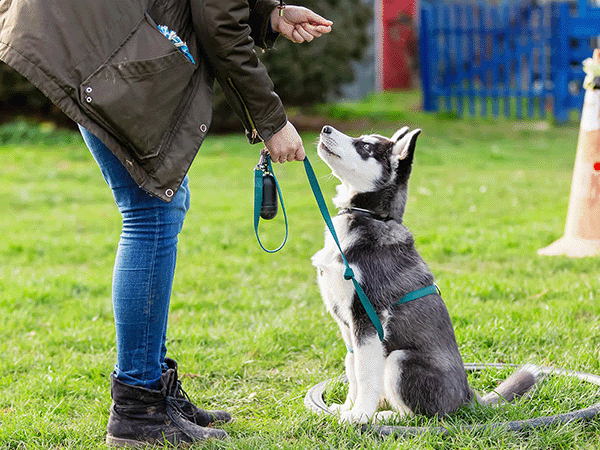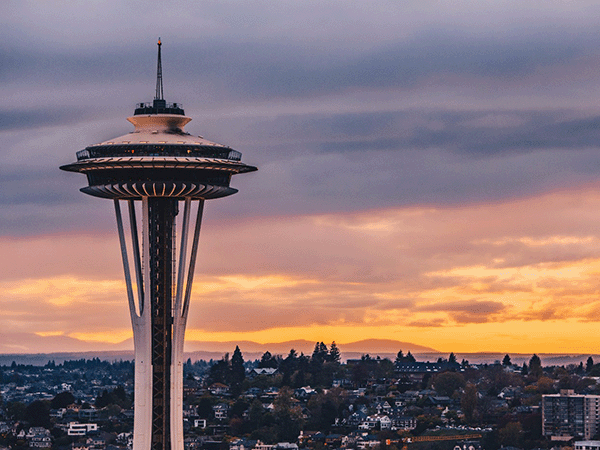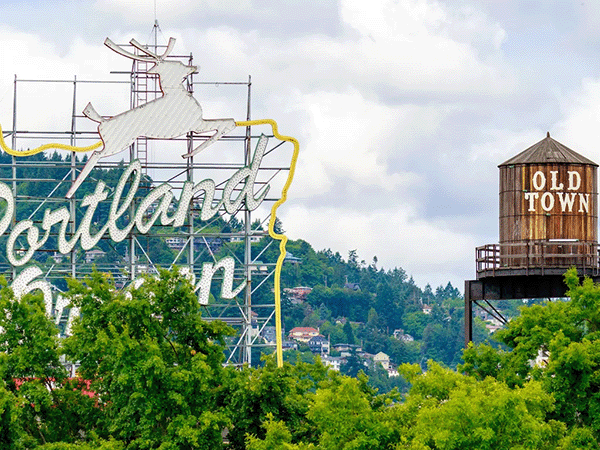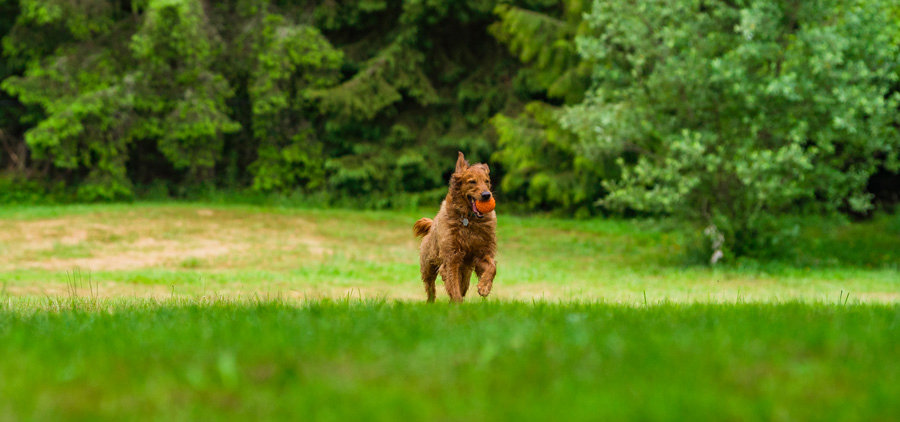Greyhound Characteristics: Your Complete Guide

Thinking about welcoming a Greyhound into your life? These elegant dogs are known for their gentle nature, but there's more to them than meets the eye. From quirky habits to exercise needs, we'll uncover all the Greyhound characteristics you need to know. We'll even cover some history of greyhound dogs and tips for greyhound first time dog owners. Ready to discover what makes these gentle giants so unique? Let's explore!
In this post, we share insights from Sniffspot users, offering practical advice for new and prospective Greyhound owners. Whether you’re considering the Greyhound adoption process of this AKC breed or you’re interested in learning more about your current companion, discover why beautiful greyhounds are a rising breed in the USA and beyond.
Source: Sniffspot Breed Survey 2024
Greyhound Characteristics at a Glance
- Breed Type: Sighthound
- Size: Large
- Life Expectancy: 10-13 years
- Healthy Weight Range: 60-70 lbs (females), 65-85 lbs (males)
- Height Range: 27-30 inches (males), 25-28 inches (females)
- Temperament: Friendly, Affectionate, Adaptable
- Coat Type: Short, smooth
- Color: Various including fawn, black, white, blue, red, and brindle
Getting to Know the Greyhound
According to our Sniffspot community survey, Greyhounds are notably friendly and affectionate dogs. The data reveals that these elegant canines are particularly adaptable (39.39% of owners) and curious (69.70% of owners). Their friendly nature (63.64% of owners) makes them excellent companions, while their affectionate temperament (51.52% of owners) ensures they form strong bonds with their families.
One of the AKC breeds, this dog is known as one of the fastest breeds. Mostly known for Greyhound racing, this quick-moving dog is quickly becoming a beloved family pet.
When living with a Greyhound, 78.79% of our owners indicated that a large house with a fenced yard is ideal. Interestingly, 45.45% of owners found that apartments or condominiums with regular walks are also suitable, making Greyhounds more versatile in terms of living situations than many might expect.
Key Takeaways
- Greyhounds thrive in a variety of homes: Despite their racing background, these gentle giants are adaptable to different lifestyles and living situations, content with moderate exercise and plenty of couch cuddles. Their friendly nature makes them wonderful family pets.
- Positive training builds a strong bond: Greyhounds respond best to gentle, reward-based training methods. Early socialization helps them become confident, well-adjusted companions.
- Understanding their needs is essential for happy ownership: Greyhounds require specific care, including protection from cold weather and attention to dental and digestive health. Providing a secure environment, especially for off-leash play, is crucial due to their strong prey drive.
Show Greyhounds vs. Racing Greyhounds
Greyhounds have a rich history, dating back over 4,000 years. They were prized by ancient civilizations and European nobility (Figo Pet Insurance). While often associated with racing, it's important to distinguish between racing Greyhounds and those bred for companionship. Many Greyhounds are adopted after retiring from the track or are bred specifically as pets, showcasing their adaptability to family life.
Temperament and Personality of Greyhounds
Greyhounds are known for their gentle, quiet, and even-tempered personalities (Towcester Racecourse & Leisure). Their history in hunting and racing has, interestingly, resulted in a lack of aggression towards other dogs. This makes them excellent companions for families with other pets. Despite their speed, Greyhounds are surprisingly low-energy at home. They enjoy long naps and need only 20-40 minutes of daily exercise (Hills Pet). This relaxed nature makes them adaptable to various living situations, from houses with yards to apartments, provided their exercise needs are met.
The Independent Greyhound
Greyhounds are relatively independent and can handle being left alone for short periods (Petplan). This independence is a benefit for busy individuals or families. However, it doesn't mean they're aloof. Greyhounds form strong bonds with their families and are known for their affection. They're often called gentle giants, happy to relax at home and show their love.
The Sensitive Side of Greyhounds
While friendly and gentle, Greyhounds can be sensitive and shy, particularly with strangers (Petplan). Early socialization is important for building their confidence and helping them adjust to new people and experiences. Because of their gentle nature, they aren't typically big barkers (Towcester Racecourse & Leisure), making them good neighbors in apartments or close communities. With proper socialization and a loving environment, Greyhounds become loyal and devoted companions. If you're looking for safe, private spaces to socialize your Greyhound, consider exploring the dog parks listed on Sniffspot.
History of Greyhound Dogs
The Greyhound’s history spans thousands of years, with evidence of the breed appearing in ancient Egyptian art and Middle Eastern artifacts. Originally bred for coursing game on open terrain using their exceptional speed and keen eyesight, Greyhounds are considered one of the oldest dog breeds in existence.
In more recent history, Greyhounds became known for their racing abilities, though today many are retired racers who transition into loving family pets. This racing heritage has contributed to their athletic build and gentle temperament, as they needed to be both fast on the track and manageable in close quarters with handlers and other dogs. One of the fastest breeds, Greyhounds have relatively low energy levels compared to breeds of similar size.
Derek Story on Unsplash
Understanding Greyhound Traits and Quirks
- Temperament: Friendly, Affectionate, Adaptable
- Energy Level: Low to Moderate
- Trainability: Moderately trainable – Learns commands with consistent training and practice
- Grooming needs: Low maintenance – Requires minimal grooming
- Good with Kids: Very friendly and social with children
- Good with Strangers: Very friendly and social with strangers
- Good with Other Dogs: Cautious around new dogs
The Prey Drive in Greyhounds
Greyhounds, like many sighthounds, possess a strong prey drive. This instinct is deeply ingrained in their nature, honed over centuries of breeding for hunting. While this makes them incredible athletes, it also requires careful consideration for households with smaller pets. As Hills Pet notes, "Greyhounds have a strong prey drive, so caution is needed around small animals." This isn't to say a Greyhound can *never* live with a cat or small dog, but successful integration requires careful introduction, consistent training, and a watchful eye. If you have smaller pets or frequent off-leash areas, especially those with small animals, it's crucial to weigh these factors when considering a Greyhound. Remember, a securely fenced area, like those you can find on Sniffspot, can provide a safe space for your Greyhound to run and play without the risk of encountering smaller animals.
Why Greyhounds Don't Bark Much
One of the appealing traits of Greyhounds is their relatively quiet nature. Unlike some breeds prone to excessive barking, Greyhounds tend to be reserved in their vocalizations. This can be a welcome characteristic for apartment dwellers or those sensitive to noise. This quiet demeanor often stems from their generally calm and even-tempered personality. Figopet Insurance describes Greyhounds as "gentle, quiet, and even-tempered." While they may not be vocal, they communicate in other ways, like leaning against you for affection or playfully “roaching” (rolling onto their backs). Their quiet nature combined with their affectionate tendencies makes them wonderful companions for those seeking a peaceful home environment.
Greyhound Ownership: What to Expect

Source: Sniffspot Breed Survey 2024
Greyhound Grooming: Essential Tips
One of the most appealing aspects of Greyhound ownership is their minimal grooming requirements. An overwhelming 93.94% of our survey respondents categorized Greyhounds as “low maintenance” in terms of coat grooming.
Their short, smooth coat requires only occasional brushing and baths to maintain its healthy appearance. This makes them an excellent choice for owners who prefer a dog that doesn’t need frequent professional grooming services. Their naturally clean nature means they typically don’t develop strong “dog odor,” and regular basic coat grooming maintenance is sufficient to keep them looking and feeling their best.
Brushing Your Greyhound
Even though Greyhounds have short, easy-to-care-for coats, they shed—a lot. Don’t let the short coat fool you! Regular brushing, even daily, can make a big difference in managing the amount of Greyhound glitter you find around your house. A quick brush helps keep their coat healthy, distributes natural oils, and reduces shedding. Plus, it's a great way to bond with your dog.
Bathing and Dental Care for Your Greyhound
One of the perks of Greyhound ownership? They're relatively odorless. Unlike some breeds that require frequent bathing, Greyhounds don't need to be bathed very often. However, regular dental care is crucial. Greyhounds are prone to dental issues, so brushing their teeth regularly is a must. Finding dog-friendly parks and spaces through Sniffspot can provide opportunities for your Greyhound to exercise and socialize, which contributes to their overall well-being. Combining regular at-home dental care with vet checkups will help keep your Greyhound’s pearly whites healthy and strong.
Exercising Your Greyhound
Despite their racing background and reputation for speed, Greyhounds are not high-energy dogs requiring constant exercise. Our survey revealed that 45.45% of owners report their Greyhounds need only low exercise (30 minutes to 1 hour daily), while 42.42% indicate moderate exercise needs (1-2 hours daily).
These dogs are known for their “40-to-zero” personality – capable of great speed but equally content being couch potatoes. They particularly enjoy activities like playing with squeaky toys (60.61% of owners report this as a favorite activity), running or jogging (36.36%), and hiking (36.36%). Many owners find that a combination of daily walks and occasional opportunities to run in a secure area perfectly satisfies their Greyhound’s exercise requirements.
Creating a Safe Exercise Space for Your Greyhound
When living with a Greyhound, having a securely fenced area is essential for their safety and well-being. Because of their strong prey drive, Greyhounds can be prone to chasing small animals, and their speed makes it easy for them to quickly cover large distances. A fenced yard allows them to enjoy time outdoors without the risk of running off. If a fully fenced yard isn’t an option, consider using a long leash in a safe, open area. Sniffspot offers a variety of private dog parks that provide secure spaces for Greyhounds to run and play freely.
While a large house with a fenced yard is ideal (as reported by 78.79% of Greyhound owners we surveyed), apartment or condo living is also possible with regular walks (45.45% of owners find this suitable). Access to safe, enclosed spaces, such as Sniffspot’s dog parks, can provide the necessary space for your Greyhound to stretch their legs and burn off energy.
Exercise Needs of a Greyhound
Despite their racing background, Greyhounds aren't high-energy dogs needing constant exercise. They’re surprisingly adaptable to different lifestyles. Our survey revealed that 45.45% of owners classify their Greyhound’s exercise needs as low (30 minutes to 1 hour daily), while 42.42% report moderate needs (1-2 hours daily). This makes them a good fit for a variety of owners, from those with active lifestyles to those who prefer a more relaxed pace.
Greyhounds are famous for their "40-to-zero" personality—capable of bursts of speed but equally happy lounging around. This balance makes them versatile companions. They enjoy a mix of activities, from playing with squeaky toys (a favorite for 60.61% of owners) to running or jogging (36.36%) and hiking (36.36%). Combining daily walks with occasional runs in a secure area, like a Sniffspot park, often meets their exercise requirements perfectly. For those interested in more structured activities, consider exploring resources on dog training and dog enrichment.
Greyhound Diet and Nutrition Guide
When it comes to feeding your Greyhound, our survey shows that most owners opt for a straightforward approach. The majority (57.58%) feed commercial dry kibble as their primary diet choice, while 42.42% prefer a mixed diet approach incorporating various food types. Commercial wet food is included by 21.21% of owners in their dogs’ diets.
Given their large size and unique metabolism from their racing heritage, proper portion control and high-quality nutrition are essential. Many owners find that dividing daily meals into two portions helps maintain stable energy levels and reduces the risk of digestive issues.
Feeding a Picky Greyhound
Greyhounds sometimes get a reputation for being picky eaters. This might be due to a sensitive stomach, or perhaps they're just discerning diners! Either way, if your Greyhound turns up their nose at mealtime, try establishing a regular feeding schedule. Two meals a day is usually a good starting point. Keeping mealtimes consistent can help regulate their appetite and digestion. If pickiness persists, consult your vet or a certified pet nutritionist. They can help identify any underlying issues or suggest ways to make meals more appealing. Sometimes a simple change in food texture or flavor can make all the difference. And remember, it's always a good idea to monitor their diet carefully, as Greyhounds can be prone to stomach upset (Petplan).
Dietary Needs of a Greyhound
So, what exactly should you be feeding your Greyhound? Our Sniffspot survey revealed that most Greyhound owners (57.58%) stick with commercial dry kibble. It's a convenient and often nutritionally complete option. However, a significant portion (42.42%) prefer a mixed diet, incorporating other food types like wet food (included by 21.21% of owners). Whether you choose kibble, wet food, or a combination, prioritize high-quality ingredients. Look for foods that meet the nutritional requirements for large-breed dogs. If you're ever unsure about the best diet for your Greyhound, your vet is always a great resource.
Maintaining a Healthy Weight for Your Greyhound
Maintaining a healthy weight is crucial for your Greyhound's overall well-being. Their large size and the legacy of their racing heritage mean they have a unique metabolism. This makes proper portion control and balanced nutrition even more important. Many Greyhound owners find that dividing their daily food allowance into two meals helps keep their energy levels stable and minimizes digestive problems (Sniffspot). Regular weigh-ins and consulting your vet about ideal weight ranges can help you stay on track. Providing opportunities for exercise, like a visit to a Sniffspot dog park, contributes to both physical and mental health, helping your Greyhound stay fit and happy.
Common Greyhound Health Concerns
Our survey data reveals several key health considerations that Greyhound owners should monitor. Dental problems are the most prevalent issue, with 60.61% of owners reporting dental concerns that require regular attention and professional care.
Digestive issues follow as the second most common health concern, affecting 51.52% of Greyhounds in our survey. These can range from sensitive stomachs to more serious conditions requiring careful dietary management. Skin conditions affect 24.24% of the breed, largely due to their thin, sensitive skin that requires protection from extreme temperatures and rough surfaces.
Regular veterinary check-ups with professionals familiar with sighthound physiology are essential, as Greyhounds have unique health characteristics that can affect everything from their blood work values to their reaction to certain medications.
Cold Weather Care for Your Greyhound
Greyhounds, with their thin coats and lean physiques, are particularly susceptible to cold weather. It's important to take extra precautions to keep them warm and comfortable during the colder months. Investing in a well-fitting coat designed for greyhounds is essential. Look for options that cover their chest and belly for maximum warmth. Even inside, consider providing them with a cozy bed or blanket, especially if your home tends to be drafty.
When venturing outdoors in cold weather, limit their exposure and consider booties to protect their paws from icy surfaces and harsh winter chemicals. If your Greyhound spends any time outdoors in a kennel, ensure it's well-insulated and free from drafts, with a raised bed to keep them off the cold ground. Cold muscles are more prone to injuries, so keeping your Greyhound warm is crucial for their overall health and well-being. A warm-up period before any strenuous activity is also a good idea. For safe, enriching outdoor experiences in any weather, explore the many dog-friendly parks and spaces available on Sniffspot.
Specific Health Issues in Greyhounds
While generally healthy, Greyhounds are predisposed to certain health conditions. As mentioned earlier, dental issues and digestive problems are common, according to our Sniffspot survey data. Regular dental cleanings and a balanced diet can help mitigate these concerns. Their thin skin also makes them prone to skin irritations and sensitivities. Be mindful of potential allergens and irritants in their environment, and consult your vet about appropriate skincare products.
Beyond these common issues, Greyhounds can also experience bloat, a serious condition requiring immediate veterinary attention. Learn the signs of bloat and avoid feeding your Greyhound large meals, especially before or after strenuous exercise. Working closely with a veterinarian experienced with Greyhounds is essential for preventative care and addressing any health issues that may arise. For insights on training and behavior, check out resources on top dog trainers available on Sniffspot.
Anesthesia Considerations for Greyhounds
Greyhounds have unique physiological characteristics that require special consideration, particularly when it comes to anesthesia. Their metabolism and body composition differ from other breeds, influencing their response to anesthetic drugs. It's crucial to inform your veterinarian about your Greyhound's breed before any procedure requiring anesthesia. A vet familiar with sighthound physiology will be able to adjust dosages accordingly to ensure the safety and effectiveness of the procedure. Open communication with your vet is key to minimizing any potential risks associated with anesthesia in Greyhounds. For more information on Greyhound health and care, explore Sniffspot's resources.
Are Greyhounds Friendly?
Our survey data shows that Greyhounds are exceptionally social creatures:

Source: Sniffspot Breed Survey 2024
Greyhounds and Other Pets
Greyhounds typically get along well with other dogs, especially those of similar size or other Greyhounds. Always introduce dogs gradually in a controlled, neutral, and fenced environment, like those available on Sniffspot. Early socialization is important, so if you’re adopting a retired racer, create opportunities for them to interact positively with other dogs.
However, Greyhounds have a strong prey drive, developed from centuries of chasing game. This makes them less suitable for homes with small animals like cats, rabbits, birds, or rodents. This instinct to chase is difficult to suppress, even with training. If you have small pets, a Greyhound might not be the right breed for you. As Petplan advises, keep Greyhounds on a leash unless they are in a completely secure area.
Greyhounds and Children
Greyhounds are known for their gentle nature, making them wonderful companions for children. They are generally tolerant and patient, often allowing children to handle them with surprising calmness. Petplan describes them as "very gentle dogs," ideal companions for kids. However, like all dogs, they have limits. While affectionate and playful, some Greyhounds may find excessively boisterous play too much.
Always supervise interactions between Greyhounds and young children to ensure both are comfortable and safe. Teaching children to interact respectfully with dogs—avoiding pulling tails, ears, or climbing on them—is crucial for a harmonious relationship. Hills Pet confirms their tolerant nature, noting their preference to avoid conflict, a positive trait in families.
Training Your Greyhound: A Practical Guide
Training success with Greyhounds relies heavily on positive methods:
- Positive Reinforcement (90.91%): Treats, praise, rewards
- Consistent daily training routines (39.39%): Consistent daily schedules and activity levels
- Socialization (33.33%): Socialization with other dogs and people
Positive Reinforcement Training for Greyhounds
Greyhounds are intelligent and generally eager to please, making them receptive to training. However, they can also be sensitive, so harsh training methods are counterproductive. Positive reinforcement, using rewards like treats and praise, is the most effective way to train a Greyhound. This approach builds a positive association with training, fostering trust and confidence between you and your dog. Our Sniffspot survey data supports this, showing that 90.91% of Greyhound owners find positive reinforcement techniques highly successful. Start with short, 5-10 minute training sessions, gradually increasing the duration as your dog's focus improves. Remember, patience and consistency are key.
Early socialization is also crucial for Greyhounds, especially if they come from a racing background and haven't been exposed to typical household environments. Introduce your Greyhound to a variety of sights, sounds, and experiences, including meeting new people and other dogs, in a safe and controlled manner. This helps them become well-adjusted and confident adults. For more information on Greyhound temperament and training, check out this resource from Petplan.
Effective Training Techniques for Greyhounds
Because Greyhounds can be sensitive, focus on creating a positive and encouraging learning environment. Use high-value treats, like small pieces of cooked chicken or cheese, to keep your Greyhound engaged and motivated during training sessions. Verbal praise and gentle petting also reinforce good behavior. Keep training sessions short and fun, ending on a positive note to maintain your dog's enthusiasm. Petplan recommends keeping sessions to 5-10 minutes, especially when starting out.
When teaching commands, consider the Greyhound's unique physiology. The "sit" command can be uncomfortable for them due to their deep chest and long legs. Instead, focus on commands like "stay" or "lie down," which are more natural and comfortable positions. For practicing these commands and providing opportunities for socialization, consider visiting one of the many dog-friendly locations listed on Sniffspot. You can even find dog water parks for a fun and refreshing outing.
If you're looking for more training tips or need help with specific behavioral issues, consult a professional dog trainer. You can find a list of top trainers on Sniffspot's blog. A qualified trainer can provide personalized advice and support, tailored to your Greyhound's individual needs. If you're curious about popular dog names, we've got you covered there too!
Greyhounds for First-Time Dog Owners?
According to our survey, 78.79% of Greyhound owners would recommend the breed to first-time dog owners. This high recommendation rate stems from their gentle nature, adaptability, and relatively easy care requirements.

Source: Sniffspot Breed Survey 2024
Adjusting to Life After Racing
Many Greyhounds available for adoption are retired racers, transitioning from the track to life as beloved companions. This shift can be remarkably smooth, thanks to the breed's adaptable nature. As noted in our history of Greyhounds, their racing background contributes to their gentle temperament, as they're accustomed to being handled and living near other dogs.
One common misconception is that retired racers require tons of exercise. Our data shows most Greyhounds are content with a moderate amount of activity, such as daily walks, playtime in a secure dog park, and occasional chances to run. This adaptability makes them suitable for various living situations, from houses with yards to apartments, provided their exercise needs are met.
Finding the Right Greyhound for You
Greyhounds are known for being gentle, quiet, and even-tempered. Towcester Racecourse notes their history in hunting and racing has bred out aggression towards other dogs. They can be a bit aloof with strangers initially, but they quickly warm up to their families, showering them with loyalty and affection. They aren't typically big barkers, a bonus for apartment dwellers or those sensitive to noise.
If you're a first-time dog owner, a Greyhound might be a perfect fit. Our survey found that nearly 80% of Greyhound owners would recommend the breed to first-timers. Their easygoing nature, combined with relatively low grooming and exercise needs, makes them surprisingly manageable companions. However, consider their strong prey drive. Figopet Insurance points out that a Greyhound might not be suitable for homes with small pets like rabbits or guinea pigs.
If you're looking for a loving, low-key companion happy to cuddle on the couch after a leisurely walk or a play session at a Sniffspot, a Greyhound might be the perfect breed for you.
Why Greyhound Owners Adore Their Dogs
We asked Sniffspot Greyhound owners what they love most about their dogs, and here’s what they had to say:
- “Greyhounds can be very graceful but also very goofy. Some people say they’re like big house cats, and that is very true!” (Lauren)
- “They have total minds of their own and they communicate so loudly with their attitudes alone. Plus greyhounds just feel like peaceful souls to me!” (Kayleigh)
- “Their calm gentle natures and their lower energy needs along with little grooming for their coat type. They are also very quiet.” (Leila)
- “Calm gentle sweet affectionate, low maintenance, doesn’t bark slobber or shed, runs only about once a week for 20 minutes, otherwise just walks.” (Cg)
Challenges of Greyhound Ownership
Similarly, Greyhound owners shared some of the biggest challenges of living with their dogs:
- “Most greyhounds are adopted as retired racing dogs. They don’t know how to walk up stairs, play with toys. They’ve never had much all to themselves and adapting to being a home companion can be difficult sometimes. They’re still worth the adoption fee and then some!” (E)
- “They’re thin-skinned, so we can’t take them to the dog park since even a friendly nip could cause serious damage!” (Jen)
- “Digestive issues (including room clearing gas) and finding proper, qualified vets as they need different anesthesia and other accommodations that not all vets are able to fill.” (Brandy)
- “They must be contained in an area. They run very fast.” (MB)
Financial Commitment of Greyhound Ownership
Bringing a Greyhound into your life involves a financial commitment. Like any pet, there are initial costs and ongoing expenses to consider. Adoption fees are typically lower than breeder prices, offering a more budget-friendly way to welcome a Greyhound into your home. You can find dog parks on Sniffspot to visit with your new greyhound.
Beyond the initial adoption or purchase price, factor in expenses like food, supplies, and routine veterinary care. Finding a vet experienced with the breed is important, as Greyhounds can have unique health considerations. Our Sniffspot survey revealed that dental issues are a common concern for Greyhound owners, so budgeting for regular dental care is wise. Pet insurance can help manage these costs and provide peace of mind.
Remember, pet ownership costs can fluctuate. Prepare for potential increases in vet bills, food costs, and other pet-related expenses. Planning for these financial aspects will help ensure you can provide a loving and healthy life for your Greyhound companion.
Tips for Happy Greyhound Owners
Our Sniffspot community shared valuable advice for prospective or new Greyhound owners:
Finding Secure Spaces for Your Greyhound
Greyhounds, despite their racing heritage, aren't always bundles of boundless energy. While they love a good run, many Greyhound owners find their companions are just as content lounging on the couch. That being said, providing opportunities for safe, off-leash exercise is crucial. As Petplan guidelines emphasize, Greyhounds should only be off-leash in completely secure areas. This is essential for preventing them from chasing smaller animals, consistent with Hill’s Pet insights on their strong prey drive.
Finding a fully fenced area can be a challenge. Sniffspot offers a solution with our diverse listings of private dog parks. You can discover secure spaces where your Greyhound can stretch their legs and enjoy off-leash freedom. Whether you're looking for a dog water park or a spacious field, Sniffspot offers a safe and enriching environment. The focus on private spaces helps avoid the anxieties of crowded public dog parks, allowing your Greyhound to socialize and play at their own pace. Explore our dog park listings to find the perfect spot.
Our Sniffspot Breed Survey 2024 shows that even apartment dwellers can successfully own a Greyhound with regular walks and access to secure run areas. Finding the right balance between relaxed home life and invigorating outdoor adventures is key to a happy and healthy Greyhound. Sniffspot makes creating those enriching outdoor experiences easier.
Build Your Greyhound Support Network
- “Get involved with a greyhound adoption group for the AKC breed. They’ll help you figure out if greyhounds are right for you, and will also provide a lot of support once you do adopt!” (Jen)
- “They can have a high prey drive, but if you train them well then it isn’t a problem on leash. If you get them off the track then they need you to give them patience and respect their boundaries while they adjust to how different life in a house is. You definitely have to learn about their uniqueness when it comes to their health(bloodwork and anatomy).” (GS)
Understanding Your Greyhound's Unique Personality
- “Read up. The sighthound family is different from what you think of when someone says, ‘dog’. Not in a bad way, mind you, but you’ll be disappointed if you’re expecting Lassie.” (P)
- “More like a cat personality than a dog–perfect for people in apartments who want a low energy and independent companion, not ideal for someone looking for a running/hiking buddy, a high-energy playmate, or a real ‘dog’s dog'” (Anonymous)
- “These dogs have a high level of tolerance for different lifestyles. But still make sure you read different adoption guides before you commit to this unique dog!” (Cara)
Positive Training for Your Greyhound
- “Positive reinforcement is the best way to go, they learn to trust and become very loyal. These dogs don’t take well to having their trust broken with negative treatment.” (Kayleigh)
- “Train them while they’re super young. Be cautious letting them play with dogs more than 20 lbs because they are prone to leg breaks. Be very patient and provide lots of positive reinforcement, especially when it comes to potty training.” (Ebby B)
Addressing Your Greyhound's Needs
- “Greyhounds are clean, quiet, and gentle dogs. They should be kept on leash outside of a fenced area because they are fast sight hounds. Be mindful of letting your hound get plenty of rest and not disturbing them while they are sleeping.” (Leila)
- “They are definitely indoor dogs, love to please, sensitive and need to be fenced in if outdoors. They have a low level of tolerance for injuries and rough play.” (Jennifer)
Frequently Asked Questions about Greyhounds
Grooming Your Greyhound: How Often?
Greyhounds are very low-maintenance dogs, with 93.94% of owners reporting minimal grooming needs. Their short coat requires only weekly brushing and occasional baths.
Unlike many other breeds, they don’t need professional grooming services and are known for being naturally clean dogs with minimal “dog odor.” Most owners find that a simple weekly brushing routine and monthly bath is sufficient to keep their Greyhound’s coat healthy and looking its best.
How Much Exercise Does a Greyhound Need?
Despite their racing background, 45.45% of Greyhounds are satisfied with low exercise (30 minutes to 1 hour daily), while 42.42% prefer moderate exercise (1-2 hours).
As Laura notes, “They MUST have an hour a day to run free, at least while they’re young.” However, once exercised, they’re known to be “couch potatoes.” Many owners find that a combination of daily walks and occasional opportunities to run in a secure, fenced area meets their Greyhound’s exercise needs perfectly.
Ideal Living Situations for Greyhounds
A significant majority (78.79%) of owners recommend a large house with a fenced yard, though 45.45% say apartments or condominiums with regular walks can also work well for Greyhounds.
The key requirement isn’t space but rather secure fencing, as these dogs should never be off-leash in unfenced areas due to their high prey drive and incredible speed. Greyhounds can adapt well to apartment living as long as they receive regular exercise and have a comfortable place to rest.
Greyhound Health: What to Watch For
Our survey revealed that dental problems are the most common health concern, with 60.61% of owners reporting dental issues requiring regular professional cleanings and maintenance. Digestive issues affect 51.52% of Greyhounds, including sensitive stomachs and potential bloat, which requires careful feeding management.
Skin conditions impact 24.24% of the breed, largely due to their thin, sensitive skin that’s prone to cuts and scrapes. While joint issues are less common, owners should monitor for signs of arthritis or injury. Some Greyhounds may also experience separation anxiety, particularly those transitioning from racing life, requiring patient training and gradual adjustment to being alone.
Helping Your Greyhound Adjust to Home Life
The transition from track to home life requires patience and understanding. Many Greyhounds have never experienced typical household environments before adoption. They often need time to learn basic household activities like climbing stairs, walking on different floor surfaces, and understanding glass doors and windows.
Normal household sounds may be new and potentially frightening at first. Many haven’t learned to play with toys or experienced regular feeding schedules, and house training in a home environment may take time. The adjustment period varies by individual dog, but most Greyhounds adapt successfully with patient, consistent guidance from their new families.
Helpful Resources for Greyhound Owners
Whether you’re a current Greyhound owner or considering adopting one, here are valuable resources to support your journey:
- Most Popular Greyhound Names
- Greyhound-Safe Enrichment Activities
- Italian Greyhound Rescue Foundation
- Italian Greyhound Rescue Nevada
Sources
- Greyhound Club of America
- Retired Racing Greyhound Adoption Organizations
- Greyhound Health and Wellness Information
Note: This article is based on survey data from Sniffspot community members who own Greyhounds. Individual dogs may vary in temperament and needs.

Greyhound Adoption and Rescue Organizations
One of the best ways to welcome a Greyhound into your life is through adoption. Many wonderful organizations specialize in rescuing retired racing Greyhounds and helping them transition to loving homes. These organizations often provide valuable support and resources for new Greyhound owners, helping you understand the breed's specific needs and quirks. Organizations like the Greyhound Adoption Center (Houndsavers), Team Greyhound Adoption of Ohio, Inc., and the Ohio Greyhound Adoption Agency are dedicated to finding Greyhounds forever homes. You can also explore options like Central Ohio Greyhound Rescue Inc. and NE Ohio Greyhound Rescue. Adopting a retired racer gives a deserving dog a second chance and brings the joy of Greyhound companionship into your life.
Reputable Greyhound Breeders
While adoption is a fantastic option, some people may prefer to purchase a Greyhound puppy from a breeder. If this is your path, it's essential to find a reputable breeder who prioritizes the health and well-being of their dogs. A responsible breeder will conduct health testing to screen for genetic disorders common in Greyhounds. They should be open about their practices, provide references, and be happy to let you meet the puppy's parents. Look for breeders who are members of recognized breed clubs like the Greyhound Club of America, which demonstrates a commitment to responsible breeding. A good breeder will also offer ongoing support after you bring your puppy home. Remember, avoiding puppy mills is crucial for the well-being of these amazing dogs.
Related Articles
Most recent articles
Related articles
Top dog guides per area
Dog training guides

Dog Food Aggression: Why You Shouldn't Punish It
Does your dog ever growl when you walk by their food dish? Maybe they get possessive of treats, carrying them far away and giving you side-eye when you start to approach — or snarling at your other pets or children if they get too close.

Best Dog Fields in the US: 25+ Wide-Open Spaces for Your Pup to Run Free
The best dog fields in the US offer something that traditional enclosed parks simply can't match: acres of open space where your pup can truly stretch their legs and run at full speed. From Colorado's 470-acre prairie meadows to Tennessee's award-winning "Outback," these wide-open spaces allow dogs to roam, explore, and exercise naturally while engaging instincts that cramped urban parks suppress.

The Ultimate Guide to Scent Training for Dogs
Your dog's nose is an amazing tool. Did you know they have 40 times the olfactory receptors than humans? Scent training for dogs taps into this superpower, turning everyday moments into exciting sniff-fests. It's enriching for all types of dogs – reactive, shy, or simply adventurous. Ready to explore the world of scent work for dogs? Let's get started.

Service Dog Training Costs: DIY vs. Pro
More than 80 million Americans rely on their service dogs to help them navigate the world. Task-trained assistance animals perform a huge range of life-changing—in many cases, life-saving—services: These dogs act as eyes for visually impaired handlers, provide mobility support, alert to seizures and blood sugar crashes, interrupt anxiety attacks, remind their people to take medications, and so much more.

How to Deal With Puppy Potty Training Regression
You thought those dreaded middle-of-the-night potty breaks were over. You were finally free from cleaning up puppy puddles. Then, suddenly, your furry friend starts having accidents again. It's frustrating, right? This puppy potty training regression is more common than you think. Don't worry; we'll help you get your pup back on track. We'll cover the common causes, offer practical solutions, and give you actionable steps to tackle this challenge together.

Dirty Dog Syndrome: Causes, Solutions, and Prevention
It's a cringe-worthy moment every dog owner dreads: your furry friend chowing down on something truly disgusting. If your dog has a penchant for poop, you're dealing with coprophagia. It's more common than you think, and thankfully, often manageable. This article explores the reasons behind dirty dog syndrome, from instinct to learned behavior. We'll also give you practical tips to help break this unpleasant habit.

How to Train Your Rescue Dog: A Complete Guide
* All Sniffspot articles are reviewed by certified trainers for quality, please see bottom of article for details *
Dog enrichment guides

Best Dog Water Parks in the US: 15+ Amazing Splash Destinations for Your Pup
Do you have a water-loving dog looking to burn some energy? There are countless dog parks to visit throughout our country — but some of them become far too hot in the midday sun to be safe for your pets to play. That’s why we’ve put together a list of some of the best dog water parks throughout the United States! At these locations, your pup can frolic, splash, and swim to their heart’s content.

Best Dog Fields in the US: 25+ Wide-Open Spaces for Your Pup to Run Free
The best dog fields in the US offer something that traditional enclosed parks simply can't match: acres of open space where your pup can truly stretch their legs and run at full speed. From Colorado's 470-acre prairie meadows to Tennessee's award-winning "Outback," these wide-open spaces allow dogs to roam, explore, and exercise naturally while engaging instincts that cramped urban parks suppress.

Best Toys for Herding Dogs: Keeping Your Pup Happy & Engaged
Herding dogs are amazing, intelligent companions. But that also means they need more than just a simple game of fetch. Finding the right toys for herding dogs is key to keeping them happy and stimulated. This article explores some of the best toys for herding dogs, including options specifically for breeds like Border Collies and Australian Shepherds. We'll help you discover the perfect herding toys for dogs to tap into their natural instincts and keep them entertained for hours.

Tough Dog Toys for Aggressive Chewers: A Practical Guide
Does your dog destroy every toy you give them? Is your house littered with the remnants of plush toys? Are you tired of wasting money on "indestructible" dog toys for aggressive chewers that don't last? Then this post is for you. We'll cover everything you need to know about finding the best dog toys for aggressive chewers, so you can finally give your pup something safe, durable, and fun.

Daily Exercise Calculator: How Much Exercise Does Your Dog Need?
Everyone knows dogs need exercise, but how much is enough? Walks are great, but creating a truly balanced fitness plan means understanding your dog's specific needs. This post helps you develop a daily exercise calculator for your dog, considering breed, age, and lifestyle. We'll cover fun activities, understanding exercise intensity, and recognizing when your pup has had enough. Let's create a plan that keeps your dog happy and healthy!

Complete Guide To Herding With Dogs
* All Sniffspot articles are reviewed by certified trainers for quality, please see bottom of article for details *

Dog Enrichment Activities: The Ultimate Guide
Ever feel like your dog is restless or bored? They may be getting enough exercise, but still need more. That's where enrichment activities for dogs come in. Giving your dog opportunities to sniff, explore, and problem-solve can make a world of difference. Whether you have a puppy, adult, or senior dog, enriching their environment is key for their well-being. Let's explore how to add cognitive enrichment for dogs, even tailoring activities to your dog's breed with breed specific enrichment and fun enrichment games for dogs.
Dog reactivity guides

Rottweiler Aggression: Truth vs. Myth
Many dogs have gotten a bad reputation over the years for being "dangerous breeds." Rottweilers are among them. Like pit bulls and other large, blocky-headed types of dogs, these powerful and beautiful animals are often assumed to be aggressive.

Best Dog Fields in the US: 25+ Wide-Open Spaces for Your Pup to Run Free
The best dog fields in the US offer something that traditional enclosed parks simply can't match: acres of open space where your pup can truly stretch their legs and run at full speed. From Colorado's 470-acre prairie meadows to Tennessee's award-winning "Outback," these wide-open spaces allow dogs to roam, explore, and exercise naturally while engaging instincts that cramped urban parks suppress.

What Is a Reactive Dog? A Practical Guide for Owners
Does your dog suddenly transform into a barking, lunging Tasmanian devil on walks? It's stressful for both of you. If this sounds familiar, you might have a reactive dog. Understanding what is a reactive dog is the first step to calmer walks. We'll explore the common triggers and give you actionable strategies to manage and modify this behavior. Let's turn those stressful walks into enjoyable outings.

How to Socialize a Reactive Dog: A Step-by-Step Guide
Does your dog display reactivity to other pets or people? Maybe they’re a new rescue pup and are still settling into your home. Or they were sick growing up, so you missed their critical socialization period. Possibly they’ve had a bad experience after being raised as a normal puppy.

What Is a Reactive Dog? A Complete Guide
Is your dog overly excited or fearful around other dogs? Do they bark, lunge, or whine? You might have a reactive dog. Many dog owners face this challenge. Understanding what a reactive dog is is the first step to helping them. This guide explores the common causes of dog reactivity, explains what makes a dog reactive, and offers practical tips and resources. Let's work together to build a stronger bond with your dog and enjoy stress-free walks.

9 Best Online Communities for Reactive Dog Parents
Does your dog's reactivity make walks stressful? You're not alone. Many dog owners face similar challenges. This guide offers practical advice and support for managing reactivity, including finding the best online dog training for reactive dogs. We'll connect you with reactive dog support groups, share training tips, and explore resources like the best dog training app for reactive dogs. Let's build a stronger bond with your dog, together.
* All Sniffspot articles are reviewed by certified trainers for quality, please see bottom of article for details *
How To Groom a Reactive Dog
* All Sniffspot articles are reviewed by certified trainers for quality, please see bottom of article for details *
Sniffspot community guides

The State of Public Dog Parks Across the United States
From 2009 to 2020, there was a 40 percent increase in the development of public dog parks. Designated spots for canine exercise have become commonplace in every major city in North America — many pet owners won’t even consider renting an apartment that doesn’t have its own fenced-in pet area for their canine companions.

Best Dog Fields in the US: 25+ Wide-Open Spaces for Your Pup to Run Free
The best dog fields in the US offer something that traditional enclosed parks simply can't match: acres of open space where your pup can truly stretch their legs and run at full speed. From Colorado's 470-acre prairie meadows to Tennessee's award-winning "Outback," these wide-open spaces allow dogs to roam, explore, and exercise naturally while engaging instincts that cramped urban parks suppress.

How This Family is Affording Their Dream Property Through Renting it Hourly to Dogs
Thousand Oaks, California has been a safe haven for Sniffspot host, Jen, since childhood. Having grown up in busy Santa Barbara, Jen, an introvert from an early age, would seek out solitude and serenity away from tourists attractions and droves of people visiting from elsewhere. “My grandparents own 60 acres about a 30 minute drive from here, and I grew up spending every summer and every holiday visiting them on the ranch,” Jen explained. “In Santa Barbara, we wouldn't go to the beach on the weekend because that's where everybody was, so you'd find places off the beaten path where the tourists weren't. For me, the ranch was just my happy place.”

Host Tips: Ellen K. What Makes Sniffspot Successful for Me
Ellen is the host of Country Pasture Getaway, one of Sniffspot's most popular sniff spots. She has taken the time to write up the lessons she has learned about how to be a great sniff spot host.

How this Oregon Farmer is Making a Business From Renting Her Land to Dogs
Just 20 minutes outside of the busy city of Portland, Oregon, and settled right on the banks of the Columbia River, you’ll find what countless visitors have flocked to the area in search of – mountain views, crisp, clean air, and running water for miles. What you might not expect to find, however, is a hidden oasis designed just for dogs and their people, owned and operated by a farming couple and enjoyed by visitors on two legs, and four.

Host Tips: Fran T. Providing Great Guest Service at our Spot
Fran is the host of Ranch Setting, one of Sniffspot's most popular spots. She has taken the time to write up the lessons she has learned about how to be a great Sniffspot host.

How Sniffspot Helped a Nervous Rescue Work Through His Fears and Change His Family’s Life
This is the story of a family and dog rescuing each other.
Top dog trainers in the US

The Best Dog Trainers in the United States of 2025
This is a list of the top dog trainers in the United States, based on votes from the Sniffspot community and the general public.
The Best Dog Trainers in Seattle, WA of 2025
This is a list of the top dog trainers in Seattle, WA, based on votes from the Sniffspot community and the general public.
The Best Dog Trainers in Portland, OR of 2025
This is a list of the top dog trainers in Portland, OR, based on votes from the Sniffspot community and the general public.
The Best Dog Trainers in Los Angeles, CA of 2025
This is a list of the top dog trainers in Los Angeles, CA, based on votes from the Sniffspot community and the general public.
The Best Dog Trainers in New York, NY of 2025
This is a list of the top dog trainers in New York, NY, based on votes from the Sniffspot community and the general public.
City dog parks guides

Top 10 Indoor Dog Parks: A US Guide
Looking for a space to play with your dog no matter what the weather’s like outside? Look no further than our list of the best indoor dog parks in the United States! These climate-controlled spaces are growing in popularity as pet ownership increases throughout the country. As a bonus, many of them also offer dog training, boarding, grooming, or daycare services on the premises.

Best Dog Fields in the US: 25+ Wide-Open Spaces for Your Pup to Run Free
The best dog fields in the US offer something that traditional enclosed parks simply can't match: acres of open space where your pup can truly stretch their legs and run at full speed. From Colorado's 470-acre prairie meadows to Tennessee's award-winning "Outback," these wide-open spaces allow dogs to roam, explore, and exercise naturally while engaging instincts that cramped urban parks suppress.

Best Dog Parks in the US: Ultimate Guide to Public & Private Off-Leash Adventures
Is your pup giving you those pleading "let me run free" eyes? Whether you're a new dog parent or a seasoned pro looking for fresh adventures, finding the perfect off-leash paradise for your furry friend can feel ruff! From sun-soaked California beaches where your water-loving lab can make a splash to mountain trails in Vermont where your adventure buddy can chase every scent, we've sniffed out the 15 best dog parks across America.

Dog Parks Near Me: Las Vegas Edition
Looking for the perfect dog park near me in Las Vegas? You're in luck! This guide explores all the best options for your pup, from public dog parks to private dog parks near me on Sniffspot. We'll help you find the ideal spot for playtime, socializing, and fresh air. Plus, we'll cover essential etiquette and safety tips to ensure a happy visit for everyone. Get ready for some tail-wagging fun!

Top Sniffspot Locations: Find the Perfect Dog Park
Looking for the perfect dog park? Whether you need a wide-open public space or a private, fenced-in spot, this guide will help you find the best dog parks across the US. We'll cover top-rated public parks, the perks of private dog parks, and even explore Sniffspot locations – giving your pup a safe and fun place to play. Ready to find your dog's new favorite spot? Let's go!

Sniffspot: Portland's Best Private Dog Parks
Ready to discover Portland's best dog parks? Whether you're looking for a public park or the unique experience of a private Sniffspot, this guide has you covered. We'll help you find the perfect spot for your pup, with tips on what to bring, how to prepare, and even understanding dog body language. Plus, we'll explore some top Portland dog parks, including public and Sniffspot options, so you can plan your next dog-friendly adventure in the City of Roses.
Portland Dog Parks: Public & Private Options
This page is about public city dog parks and also includes Sniffspot private dog parks. Sniffspot is the largest network of private dog parks for rent in the world!
Small Dog Park Guide: Tips for Finding the Perfect Spot
Finding the perfect dog park for your small breed can be ruff! Big dog parks can be overwhelming, even dangerous, for little pups. This comprehensive guide helps you sniff out the best small dog parks for your pint-sized companion, covering everything from essential safety checklists to top recommendations for small dog parks across the US—including both public spots and private dog parks.
Dogs breeds

German Shepherd Dogs: Insights From Real Dog Owners
The German Shepherd Dog (GSDs) are known for their intelligence, loyalty, and striking appearance. They're also incredibly versatile, excelling as working dogs and devoted family companions. This guide covers everything you need to know about GSDs, from understanding their unique traits and rich history to practical advice on training and care. So, whether you're a seasoned GSD owner or just starting your research, let's explore this remarkable breed together.

Best Dog Fields in the US: 25+ Wide-Open Spaces for Your Pup to Run Free
The best dog fields in the US offer something that traditional enclosed parks simply can't match: acres of open space where your pup can truly stretch their legs and run at full speed. From Colorado's 470-acre prairie meadows to Tennessee's award-winning "Outback," these wide-open spaces allow dogs to roam, explore, and exercise naturally while engaging instincts that cramped urban parks suppress.

Labrador Retriever: Ultimate Guide by Owners
Discover the Labrador Retriever, a breed celebrated for its playful nature, affectionate temperament, and trainability. Labradors are known for their friendly demeanor and adaptability, making them perfect family companions and versatile working dogs. As one of the most popular types of retrievers, Labs are ideal companions for various lifestyles and are recognized by the American Kennel Club (AKC) as an excellent breed for families.

Golden Retriever Advice: The Complete Owner's Guide
Golden Retrievers: they're gorgeous, playful, and incredibly popular. But before you welcome one into your home, you need the right golden retriever advice. This guide draws on the wisdom of nearly 10,000 Golden Retriever owners, offering practical tips for caring for these affectionate dogs. From understanding their high energy levels to mastering grooming and training, we'll cover everything you need to know. So whether you're already a devoted Golden parent or just starting your research, get ready to learn how to give your furry friend the best possible care.

American Staffordshire Terrier: Your Complete Guide
Think American Staffordshire Terriers are tough? Think again. While their muscular build might intimidate some, these dogs are known for their playful and loyal personalities. This guide draws on the experience of nearly 10,000 AmStaff owners to reveal the truth about this often misunderstood breed. Want to learn more about caring for an American Staffordshire Terrier? You're in the right place.

Australian Shepherd Facts: Breed Info & Care Guide
Discover the Australian Shepherd, an AKC breed celebrated for its trainable, playful, and affectionate nature. Despite its name, the Australian Shepherd is actually a native breed to the United States, originally developed to breed on farms and ranches. Considered a medium dog, Australian Shepherds were bred for herding beginning in the 1950s. As one of the high-energy breeds, Aussies are known for their boundless energy and need for regular exercise, including aerobic exercise.

Essential Husky Facts for Owners: Breed Guide
Discover the Siberian Husky, a breed celebrated for its curious, intelligent, and loyal nature. Considered a medium-sized dog, Siberian Huskies were originally bred in Russia for sledding, beginning in the early 20th Century. Today, they're one of the most popular active breeds in North America.




























